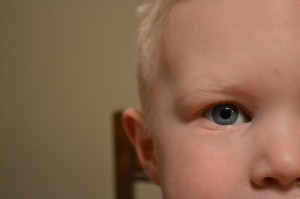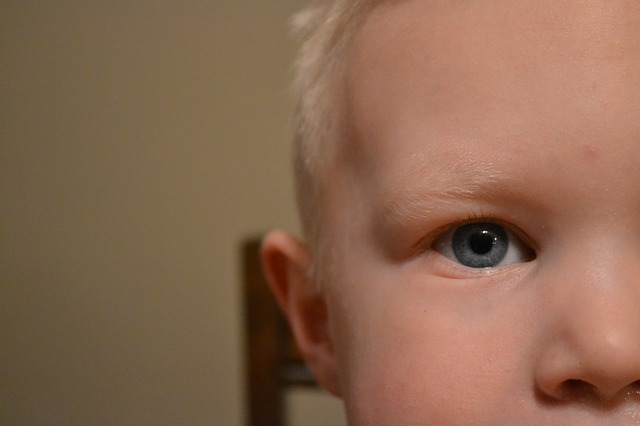 Eye health is very important. Did you know that often times an eye doctor can determine if you have certain conditions like diabetes and other health problems based on an eye exam. As you age, often times your eyes will change over the years and you will need to get prescription glasses or contacts. It is recommended that adults get an eye exam at least every 2 years but children should also get eye exams too. Most pediatricians will do a basic eye exam on your child but this isn’t always enough to catch problems with vision or eye health. The eye doctor has special equipment that can determine if you need glasses before you even see the dr. Plus, they check for other eye disease and conditions. If your child hasn’t seen the eye doctor, please schedule an appointment for them as soon as possible.
Eye health is very important. Did you know that often times an eye doctor can determine if you have certain conditions like diabetes and other health problems based on an eye exam. As you age, often times your eyes will change over the years and you will need to get prescription glasses or contacts. It is recommended that adults get an eye exam at least every 2 years but children should also get eye exams too. Most pediatricians will do a basic eye exam on your child but this isn’t always enough to catch problems with vision or eye health. The eye doctor has special equipment that can determine if you need glasses before you even see the dr. Plus, they check for other eye disease and conditions. If your child hasn’t seen the eye doctor, please schedule an appointment for them as soon as possible.
Disclosure: This post is for informational purposes only. If you or your child has potential life threatening eye problems, please go to the emergency room or schedule an appoint with an eye doctor.
Diana Smith wanted to share some of the common eye problems that are often seen in children with my readers. I hope you enjoy her information and tips.
It seems like all parents are guided by several ideas they have about their child having vision problems. These include rubbing their eyes, squinting, sitting too close to the television/monitor… when in fact, these are not always the indicator something isn’t right. Often, there are no clear signs your child isn’t seeing well and before you know it your child hits teen years and is diagnosed with huge lenses.
So, in order to prevent this from happening, you need to be aware of what signs to look for:
In Infants
The first few months of a baby’s life are limited to objects/faces that are only 8 to 10 inches from their face. Their eyesight starts to improve when they enter 12th week. This is when they start seeing things that are further away and their vision becomes clearer.
As time passes, children develop the ability to judge distances along with eye-body coordination, depth perception and eye-hand coordination. This usually happens over the next year and it happens really rarely for kids to have vision problems at this age.
The time to be most careful and observant when it comes to catching vision impairment at an early stage is when a child is between 18 months and 4 years old. The two most common vision issues are:
Uneven Focus
Uneven focus is the issue where one eye more farsighted than the other. It affects 2% to 3% of children. Unfortunately, uneven focus is the hardest to detect as young kids are unaware of their vision being compromised.
Crossed or Wandering Eye
A crossed or wandering eye is a condition that troubles 3% to 5% of kids. It is recognized through one eye drifting or appearing crossed in respect to the other eye.
Either of two vision issues doesn’t seem alarming at first but if they remain untreated a child may have some serious vision problems. For instance, if a child has one eye focus stronger than the other, that child’s brain will in time place focus on that stronger eye and completely ignore images coming from the weaker eye (compromised vision in that weaker eye is called amblyopia or lazy eye). The vision loss in that weaker eye will in time become permanent and by the age of 9 or 10 a child will have one eye almost dysfunctional. In order to stop this from happening, you need to catch the ‘problem’ in its early stage. This is done through vision screening.

Comments
4 responses to “Common Eye Problems in Children”
My son had his eye checked recently. Nothing serious, just a routine physical examination at school where they have everything checked, including the eyes.
That is good. A visit to the eye includes a few additional tests in the US.
Very useful & informative. Vision screening must be part of your child’s routine pediatric check-ups. A more severe type of conjunctivitis that can affect newborn babies younger than 28 days. Most cases of conjunctivitis in babies are not particularly serious. But there is a small possibility of serious complications if it’s left untreated. If you notice any complexities in your baby’s eyes, contact your doctor for advice.
I hate pink eye and I try to take my kids to the doctor as soon as I notice. Unfortunately, if you have allergies you are more likely to get it too. I get pink eye even as an adult because of allergies.